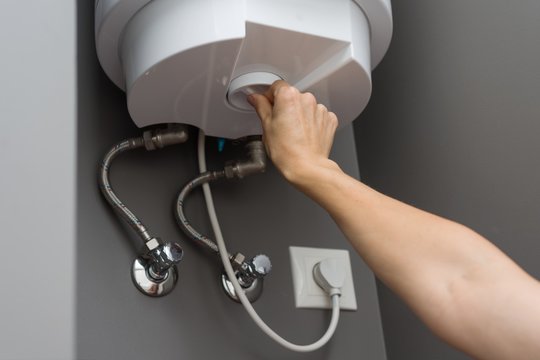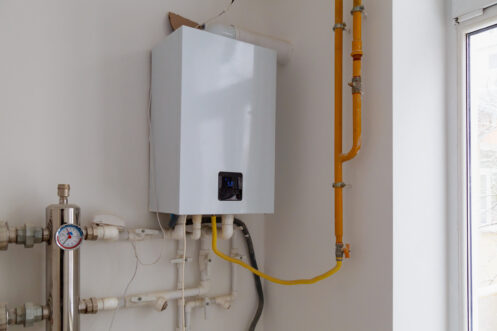Simple Steps to Caring for Your Home's Hot Water System
Simple Steps to Caring for Your Home's Hot Water System
Blog Article
How do you really feel in regards to How to Maintain Your Water Heater & Prolong its Life?

Hot water is necessary for day-to-day comfort, whether it's for a revitalizing shower or washing meals. To guarantee your hot water system runs efficiently and lasts much longer, normal maintenance is vital. This article supplies practical ideas and insights on exactly how to keep your home's hot water system to prevent disturbances and costly repair services.
Introduction
Keeping your home's hot water system might appear daunting, however with a couple of straightforward actions, you can guarantee it operates smoothly for many years ahead. This guide covers whatever from comprehending your hot water system to DIY maintenance ideas and recognizing when to call in professional assistance.
Value of Maintaining Your Hot Water System
Routine maintenance not just prolongs the life-span of your warm water system yet likewise ensures it operates effectively. Disregarding upkeep can bring about decreased efficiency, higher power expenses, and also early failing of the system.
Indications Your Warm Water System Requirements Upkeep
Recognizing when your hot water system requires focus can prevent significant concerns. Keep an eye out for indicators such as inconsistent water temperature, strange noises from the heater, or rusty water.
Purging the Hot Water Heater
Purging your water heater gets rid of debris build-up, enhancing effectiveness and extending its life.
Checking and Replacing Anode Rods
Anode rods avoid corrosion inside the tank. Inspecting and changing them when broken is vital.
Complicated Problems Calling For Expert Help
Examples consist of significant leaks, electrical troubles, or if your water heater is consistently underperforming.
Regular Expert Maintenance Benefits
Specialist upkeep can include detailed examinations, tune-ups, and making certain conformity with safety standards.
Evaluating and Readjusting Temperature Setups
Readjusting the temperature level setups makes certain ideal performance and safety and security.
DIY Tips for Upkeep
You can carry out several maintenance tasks on your own to maintain your warm water system in top condition.
Checking for Leakages
Routinely examine pipelines and connections for leakages, as these can lead to water damages and higher costs.
Recognizing Your Hot Water System
Before diving into upkeep jobs, it's practical to recognize the standard elements of your warm water system. Normally, this consists of the water heater itself, pipelines, anode rods, and temperature controls.
Monthly Maintenance Tasks
Regular monthly checks can help catch small issues before they escalate.
Checking Pressure Alleviation Valves
Checking the pressure safety valve ensures it works properly and avoids extreme stress accumulation.
Insulating Pipes
Protecting hot water pipelines minimizes heat loss and can save power.
When to Call an Expert
While DIY maintenance is useful, some concerns require specialist know-how.
Final thought
Normal maintenance of your home's warm water system is vital for performance, longevity, and expense financial savings. By complying with these pointers and knowing when to seek expert aid, you can ensure a trustworthy supply of warm water without unanticipated disruptions.
Water Heater Maintenance Tips
Test the TPR Valve
Shut off the power and the cold-water supply valve. Place a bucket under the pipe connected to the temperature-pressure-release (TPR) valve on the top or side of the tank. (This valve opens if the tank pressure gets too high.) Lift the valve’s tab to let some water out, then let go. If water keeps flowing, drain the tank partway, unscrew the old valve with a pipe wrench, and install a new one. Check the Anode Rod
Put a hose to the tank’s drain cock and let out a few gallons of water. Now fit a 1 1/16-inch socket onto the rod’s hex head on top of the heater (or under its top plate) and unscrew the rod. If it’s less than ½ inch thick or coated with calcium, buy a new one, wrap its threads with Teflon tape, put it back in the tank, and tighten securely. Use this segmented rod if headroom above the tank is limited. Drain the Tank and Wash Out Sediment
Drain the remaining water in the tank into the bucket, then stir up the sediment on the tank’s bottom by briefly opening the cold-water supply valve. Drain and repeat until clean water comes out of the hose. Close the drain cock, refill the tank, and turn its power back on. Adjust the Temperature
Find the temperature dial on the side of the tank and unscrew its cover. Adjust the dial to 120 degrees using a flathead screwdriver. For every 10 degrees the temperature is lowered, you can expect to save up to 5 percent in energy costs. Turn the water heater off or the thermostat down to its lowest setting if you plan to be away from home for more than three days. Insulate the Pipes
Buy some self-sticking 3/8-inch-thick foam pipe insulation that matches the pipes’ diameter. Slide the foam over the hot-and cold-water pipes as far as you can reach. Insulating the cold-water pipe prevents condensation in summer. Peel the tape and squeeze the insulation closed. If the pipe is 6 inches or less from the flue, cover it with 1-inch-thick unfaced fiberglass pipe wrap. https://www.thisoldhouse.com/plumbing/21016402/how-to-maintain-a-water-heater

I was brought to that report on Tips on Maintaining a Water Heater from a good friend on a different blog. Make sure you pause to share this content if you enjoyed it. I truly appreciate reading our article about What Kind of Maintenance Do Water Heaters Need?.
Call Today Report this page